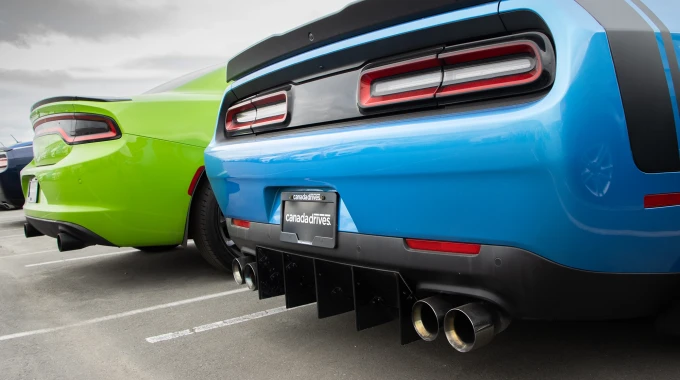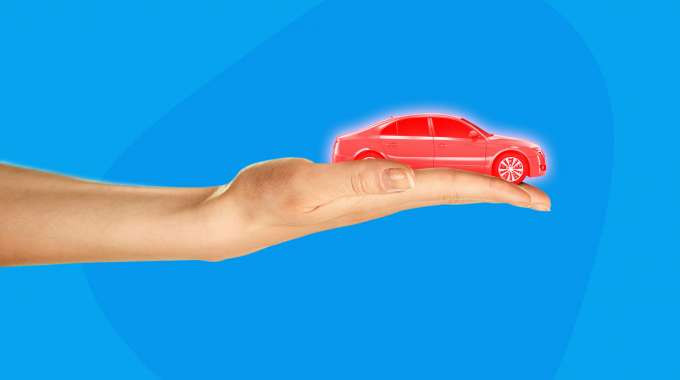
What Is a Lien on a Vehicle?
A lien registered on a vehicle is a legal claim or right that a creditor, usually a financial institution, holds against a vehicle as collateral for a loan or debt. When a car buyer finances a vehicle purchase, the lender places a lien on the car until the loan is fully paid off.
This lien ensures that the lender can repossess the vehicle if the borrower defaults on the loan terms (fails to pay the car loan bill). Understanding vehicle liens is crucial for anyone involved in buying or selling a used car, especially in Canada, where regulations can vary significantly by province or territory.
Bought a Car with a Lien on It in Canada - What Happens Now?
If you discover that you've bought a used vehicle with a lien on it in Canada, it's important to take immediate action to address the situation. The lien represents an outstanding debt that you could be responsible for if not resolved, meaning you could be responsible for the money owed on the outstanding lien! Here’s what typically happens and what steps you should take:
- Contact the Seller: Reach out to the seller to discuss the lien. If the seller is a dealership, they should resolve the lien as part of the sale agreement. If it's a private seller, request that they pay off the debt immediately to remove the car lien..
- Verify the Lien: Obtain the lender’s contact information and verify the outstanding amount. Ensure you have all the details about the lien, including how much is owed and the loan terms.
- Negotiate: If the seller refuses to pay off the lien, you may need to negotiate a reduction in the purchase price equivalent to the lien amount or return the vehicle for a full refund.
- Legal Action: If the seller was aware of the lien and did not disclose it, you could consider legal action for misrepresentation or fraud. When selling cars privately the seller should always disclose a car lien.
- Pay Off the Lien: If no resolution is possible with the seller, you might have to pay off the lien yourself to clear the vehicle title. This step is crucial for car buyers wanting to ensure a lien-free vehicle.
How to Put a Lien on a Vehicle by Province
The process of placing a lien on a vehicle in Canada varies by province. Generally, it involves the lender registering the lien with the provincial body that governs transportation and vehicle registration or the Personal Property Registry.
Each province or territory has specific procedures and fees for registering a lien, and lenders must comply with these regulations to ensure their claim is legally binding.
Someone Sold Me a Car with a Lien on It Without Telling Me
If you bought a car with an existing lien that the seller did not disclose, you could face significant legal and financial challenges. Here's what you can do:
- Contact the Seller: Immediately reach out to the seller and demand they pay off the lien. If the seller refuses or cannot be reached, document all your communications for potential legal action.
- Legal Recourse: Consider filing a lawsuit against the seller for failing to disclose the lien. You may be able to recover the amount you paid for the vehicle or force the seller to pay off the lien.
- Lien Holder: Contact the lien holder to explain the situation. They may provide options for resolving the lien, although you might still be responsible for paying it off to clear the vehicle title.
- Check Provincial Laws: Some provinces have consumer protection laws that might offer additional recourse in cases of undisclosed liens.
To avoid such situations, always check the lien status of a vehicle before purchasing, especially from a private seller.
Can Someone Put a Lien on My Car Without Me Knowing?
In most cases, a lien cannot be placed on your vehicle without your knowledge, as it involves a formal process where the vehicle owner usually grants consent to the lien as security for a debt. However, there are exceptions:
- Statutory Liens: These can be placed without your explicit consent, typically for unpaid taxes or fines. Government agencies have the authority to impose such liens. If you hear someone mention a tax lien this is a type of statutory lien.
- Mechanic’s Liens: If you fail to pay for repairs or services on your vehicle, a mechanic or service provider may place a lien on your car for the unpaid bills.
- Unpaid Debts: Creditors may obtain a court judgment against you and place a lien on your vehicle to secure payment of unpaid debt.
If you discover an unexpected lien on your vehicle, contact the lien holder or registering agent to understand the nature of the lien and the debt it secures.
Is It Illegal to Sell a Car with a Lien on It in Canada?
Selling a car with a lien on it is not illegal in Canada, but the seller is legally required to disclose the existence of the lien to the buyer. Failure to do so can result in legal consequences for the seller and financial hardship for the buyer. Here’s what you need to know:
- Disclosure: Sellers must inform potential buyers of any existing liens on the vehicle. This transparency allows buyers to make informed decisions and negotiate accordingly.
- Clear Title: It is common practice to clear the lien before transferring ownership. The seller can use the sale proceeds to pay off the lien, ensuring the buyer / new owner receives a free and clean title.
- Legal Consequences: If a seller fails to disclose a lien, the buyer may have grounds for legal action based on misrepresentation or fraud.
- Buyer’s Responsibility: Buyers should perform due diligence by checking the lien status through a vehicle history report or provincial registry before completing the purchase.
How Do You Check if a Vehicle Has a Lien on It in Canada?
To check if a vehicle has a lien on it in Canada, you can use several resources:
- Carfax Canada: Provides a comprehensive vehicle history report that includes lien information. You can use the vehicle identification number (VIN) to obtain this report. This is particularly useful for used car buyers to ensure they are not inheriting someone else's debt.
- Provincial Online Services: Most provinces offer online services where you can check lien status using the VIN. These services are typically available through the provincial transportation or registry office websites.
- Service Providers: Companies that specialize in vehicle history and lien searches can provide this information for a fee.
- Provincial Registry: You can contact the provincial registry office directly to inquire about the lien status of a vehicle. This may require a fee and specific forms.
Ensuring a vehicle is lien-free before purchase is crucial to avoid inheriting someone else's debt. You can visit the canada.ca website to check for car liens in your province or territory here.
How to Remove a Lien on a Car in Canada
Removing a lien on a car typically involves paying off the outstanding debt. Once the debt is cleared, the lender should provide a lien release document, which you then submit to the provincial body that manages vehicle registrations to update the vehicle's title to a lien-free status. Here’s a general outline of the process:
- Pay Off the Debt: Clear any outstanding loan or debt secured by the lien. Contact the lender to obtain the exact payoff amount and ensure the debt is fully satisfied.
- Obtain Lien Release: Get a lien release form or document from the lender. This document confirms that the debt has been paid and the lien can be removed.
- Submit Documentation: Provide the lien release to the appropriate provincial registry to update the car title. This may involve submitting forms and paying a fee.
- Update Title: Once the lien is removed, the registry will update the vehicle’s title to reflect its lien-free status.
It’s important to keep records of all transactions and communications during this process to avoid any future disputes.
Shop with confidence with a pre-approved car loan from Canada Drives:
If the idea of potentially getting stuck with a vehicle that has a lien on it sounds like too big of a risk you can avoid the issue altogether by purchasing a car through Canada Drives.
Canada Drives has built a nationwide network of reputable new and used car dealerships who carry a wide variety of quality vehicles. Complete the simple pre-approval form online in minutes and you’ll get connected with a local dealership in your area who will show you all the vehicles you qualify for. All you have to do is pick the one you want and drive away! No stress. No worrying about potential liens!







